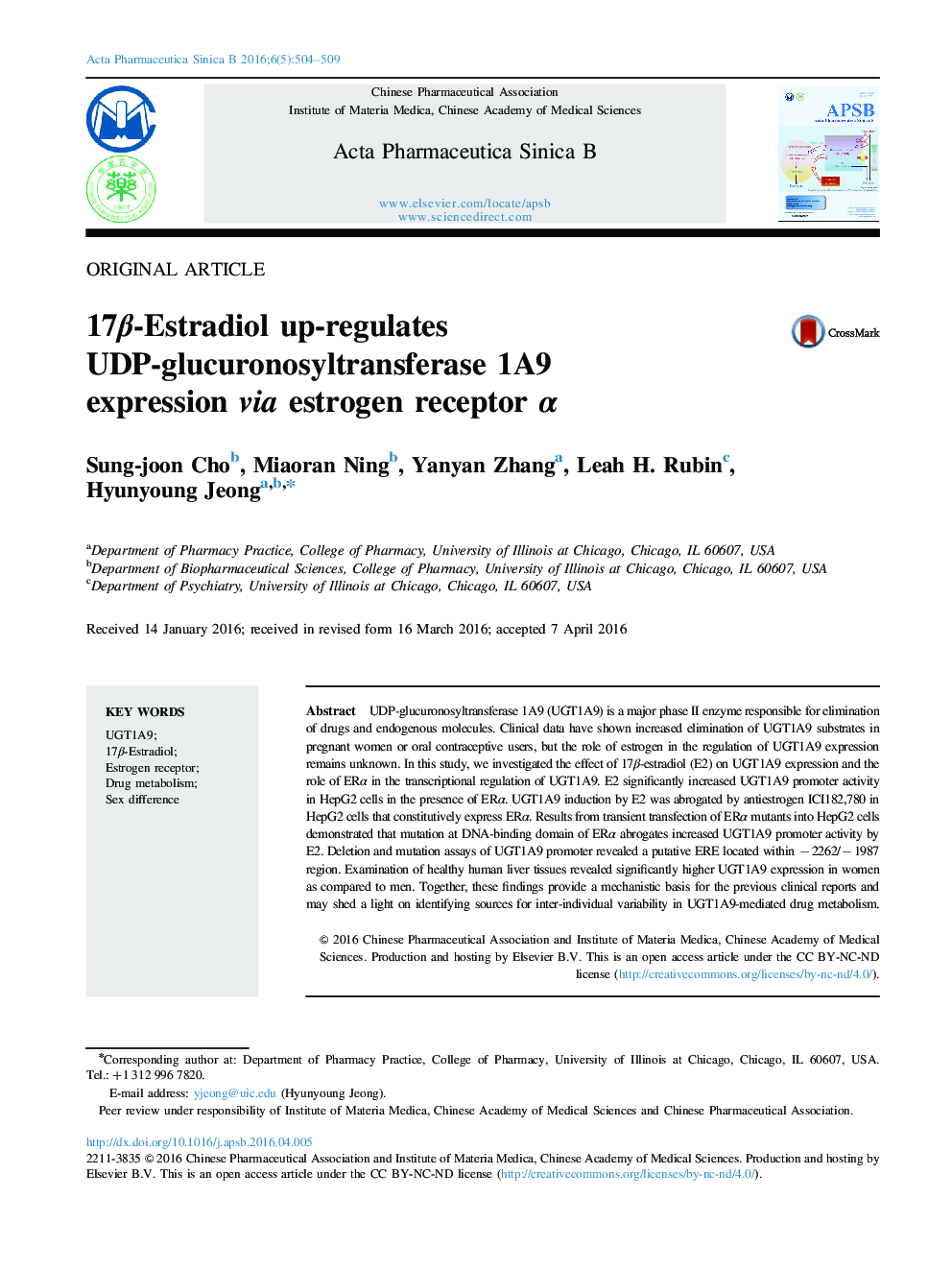| Article ID | Journal | Published Year | Pages | File Type |
|---|---|---|---|---|
| 5546557 | Acta Pharmaceutica Sinica B | 2016 | 6 Pages |
UDP-glucuronosyltransferase 1A9 (UGT1A9) is a major phase II enzyme responsible for elimination of drugs and endogenous molecules. Clinical data have shown increased elimination of UGT1A9 substrates in pregnant women or oral contraceptive users, but the role of estrogen in the regulation of UGT1A9 expression remains unknown. In this study, we investigated the effect of 17β-estradiol (E2) on UGT1A9 expression and the role of ERα in the transcriptional regulation of UGT1A9. E2 significantly increased UGT1A9 promoter activity in HepG2 cells in the presence of ERα. UGT1A9 induction by E2 was abrogated by antiestrogen ICI182,780 in HepG2 cells that constitutively express ERα. Results from transient transfection of ERα mutants into HepG2 cells demonstrated that mutation at DNA-binding domain of ERα abrogates increased UGT1A9 promoter activity by E2. Deletion and mutation assays of UGT1A9 promoter revealed a putative ERE located within â2262/â1987 region. Examination of healthy human liver tissues revealed significantly higher UGT1A9 expression in women as compared to men. Together, these findings provide a mechanistic basis for the previous clinical reports and may shed a light on identifying sources for inter-individual variability in UGT1A9-mediated drug metabolism.
Graphical abstract17β-Estradiol up-regulates UDP-glucuronosyltransferases 1A9 (UGT1A9) expression via estrogen receptor α (ERα). This potentially contributes to sex difference in hepatic UGT1A9 expression.Download high-res image (96KB)Download full-size image
